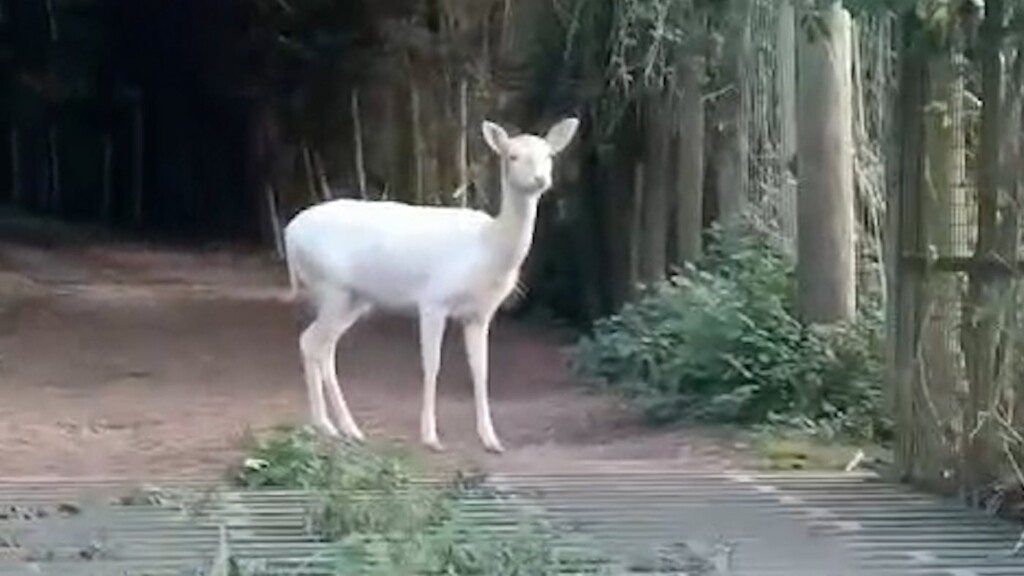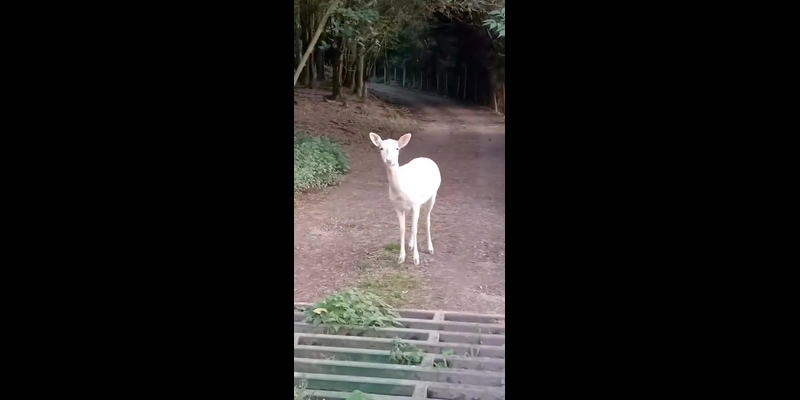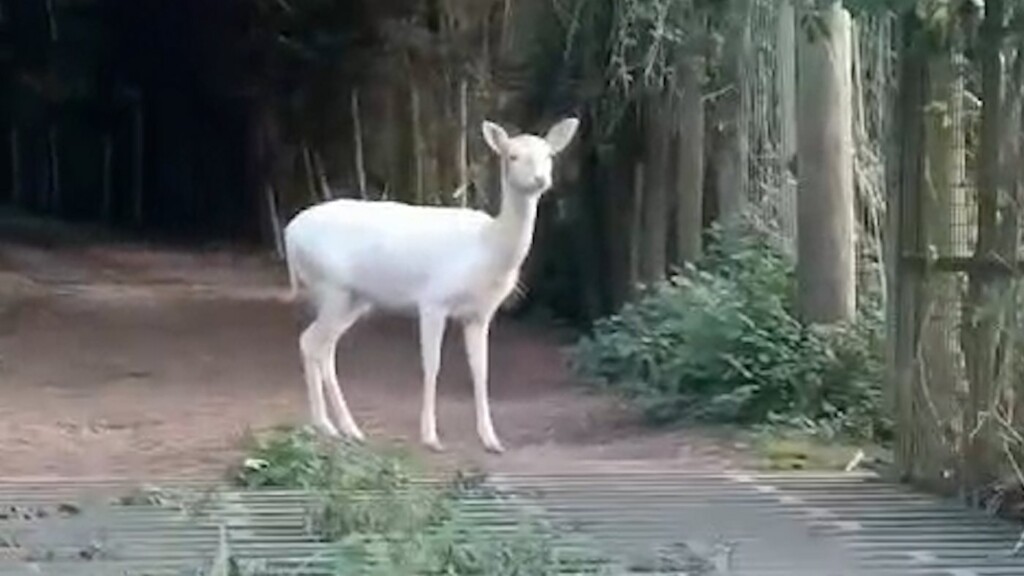It was supposed to be an ordinary day on the water. Nineteen-year-old Esha Patel, a university student at Cardiff, joined her father on a fishing trip—a quiet morning meant for casting lines, swapping stories, and enjoying the stillness of nature. But what unfolded would become a once-in-a-lifetime memory, etched in wonder.

From the treeline came movement. At first glance, it looked like the usual: a pair of brown deer stepping cautiously into the clearing. Then came the third—and Esha’s breath caught in her chest.
It wasn’t brown at all. It was white.
“The white one came so close—less than ten feet away,” Esha recalled later, still in awe. “It was beautiful and so cute.”
For a brief moment, time seemed to stop. The deer stood before them, dazzling against the green backdrop of the woods. To some, it might have seemed unreal—like a vision, or a figure pulled from folklore. To Esha, it was nothing short of breathtaking.
Her father, blinking in disbelief, even asked if she was sure it wasn’t a goat. But Esha knew what she had seen. And she would later learn just how rare the sighting really was.

Wildlife experts say the chances of spotting such a creature in the UK are about one in 30,000. The phenomenon is the result of leucism—a recessive genetic trait that strips pigment cells from most of the body. Unlike true albinos, leucistic animals are not completely white and do not have pink eyes. But they remain extraordinary to behold.
White deer are often considered symbols of mystery and luck, a belief woven through centuries of myth and legend. For Esha, the encounter was so striking that she joked about buying a lottery ticket afterward. “Apparently it’s really good luck to see them,” she laughed.
Yet there’s a bittersweet truth behind their beauty. In the wild, pale animals rarely live long—their coloring makes camouflage nearly impossible. But deer, particularly in the UK and parts of the US, are more often threatened by hunters than predators. Ironically, that has given white deer a better chance to survive. Many hunters view them as sacred, refusing to shoot when one appears.
Looking at the photographs, it’s easy to understand why. The deer that crossed Esha’s path seemed almost otherworldly, a fleeting glimpse of nature’s rarest artistry. And while its exact location won’t be revealed for safety reasons, its image now lives on—reminding us that even in a world that feels familiar, wonders still appear when we least expect them.
For one young student and her father, what began as a simple fishing trip became something far greater: an unforgettable brush with rarity, beauty, and the magic of the wild.




